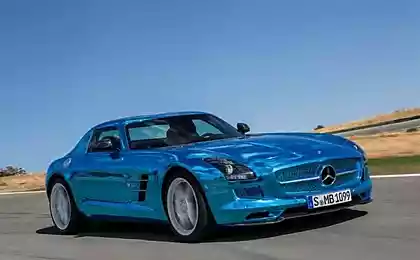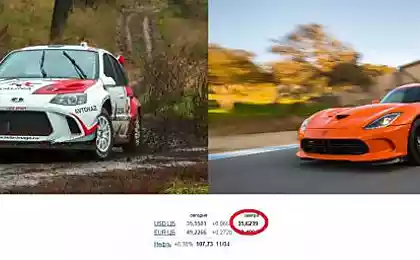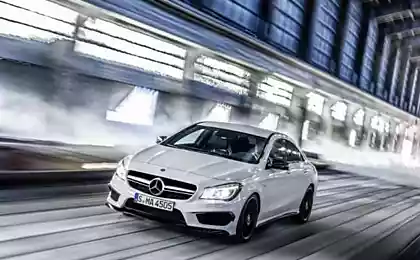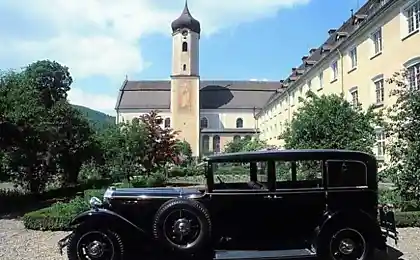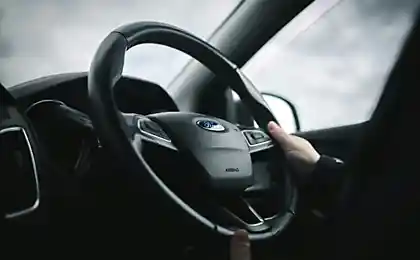733
Mercedes-benz Sl63 Amg F1 Safety Car
Looked last race in Monza. The start was given behind the safety car, here and decided to make podborochku start with the Mercedes-Benz SL63 AMG F1 Safety Car 2008 ...
30 photos
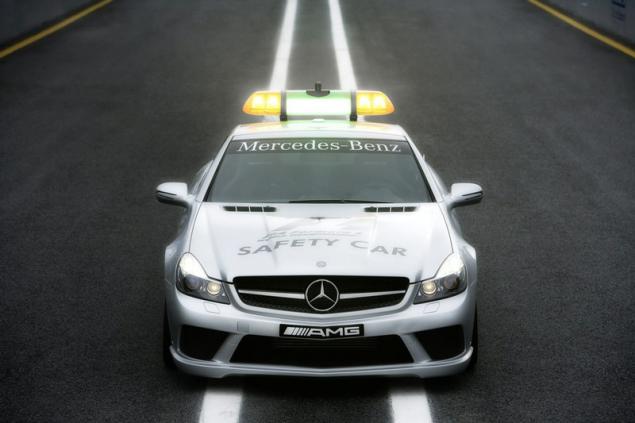
For maximum reliability, even at very high ambient temperatures, the vehicle is equipped with a large additional coolers for engine oil, transmission oil, coolant and power steering. Unmatched chassis dynamics are guaranteed a newly developed 7-speed sports transmission AMG SPEEDSHIFT MCT with a switch on the steering column, which makes it possible to switch the transmission in just 100 milliseconds. The combination of 3-stage ESP® stability control system and differential lock on the rear axle ensures optimal traction in all weather conditions. Perfect behavior on the racetrack, the best "feeling of the road", "racing" cornering and reducing excess / understeer are guaranteed not only a specially designed chassis proved their abilities to race, but also many opportunities leveling, the distance between the wheels and the collapse wheels that enable the chassis individually set in accordance with a particular racetrack.
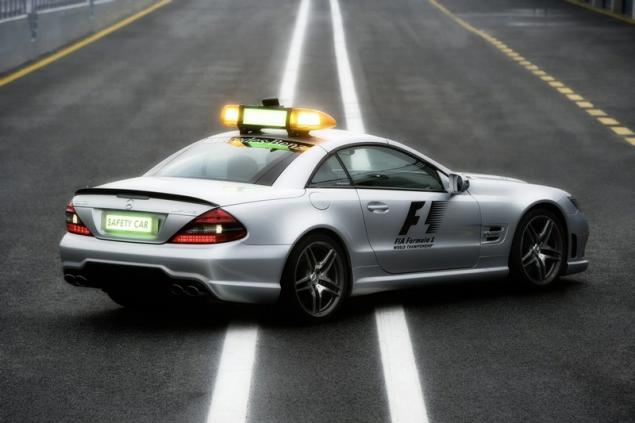
Front and rear axle are equipped with 19-inch ultra-light alloy wheels AMG. 8.5-inch (front) and 9.5-inch (rear) rims are fitted with tires of the dimension, respectively, 255/35 and 285/30 on the Formula 1 shinoproizvoditelya company Bridgestone. The design of the rims, with their unusual double spokes, optimizes both the cooling of the braking system and the flow of cooling air. Optimum durability and the best possible braking are the main characteristics of high-performance braking system AMG, fitted with composite brake discs with internal ventilation. The front axle is fitted with six-piston fixed calipers and brake discs with dimensions of 390x36 mm and the rear axle - 4-piston fixed calipers and brake discs with dimensions of 360x26 mm.
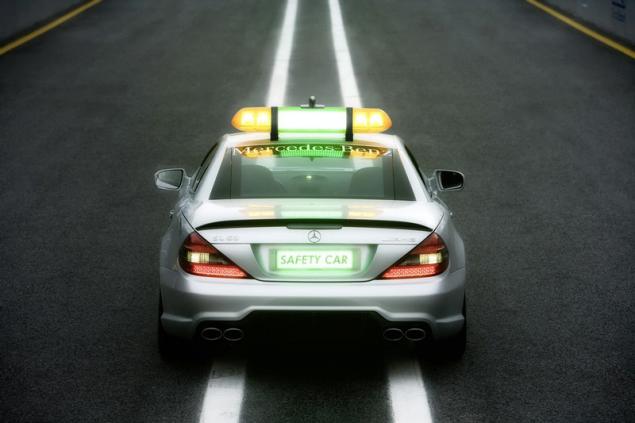
...
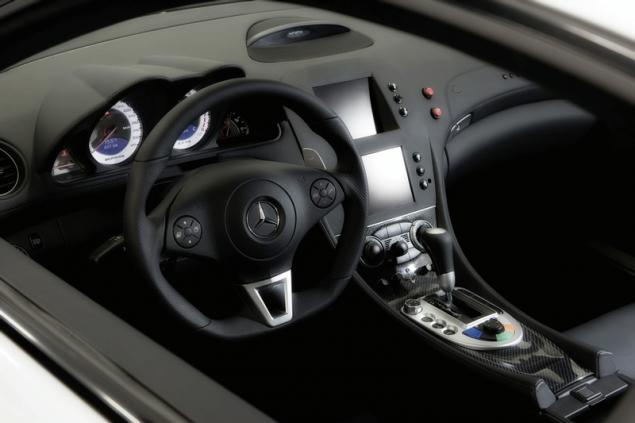
...
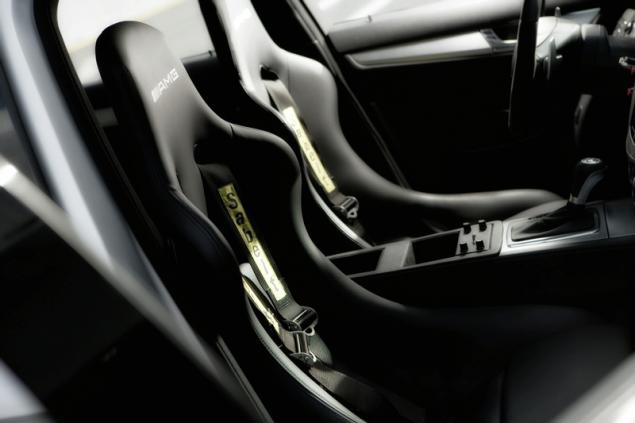
...
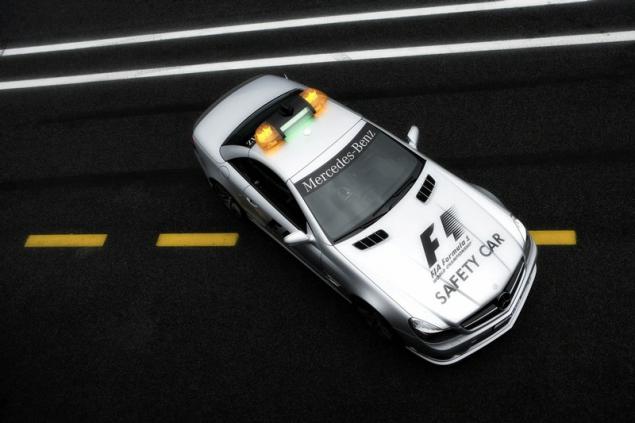
...
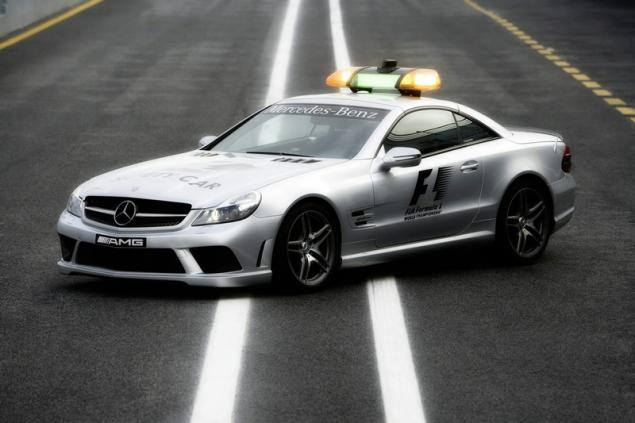
Along with the safety car the SL 63 AMG, another high-power car AMG celebrates its premiere in the first Grand Prix of the season in Melbourne, Australia: official medical Formula 1 car the C 63 AMG Estate Official F1 ™ Medical Car. At the beginning of every Grand Prix, fast touring AMG will follow the participants of Formula 1 on the first lap. These measures are being taken because the first round is a critical stage of the race, which involved in Formula 1 race cars most likely to encounter. In addition, in the case of any accident during the race the medical car - the first car, which appears on the scene, and it should guarantee immediate assistance.
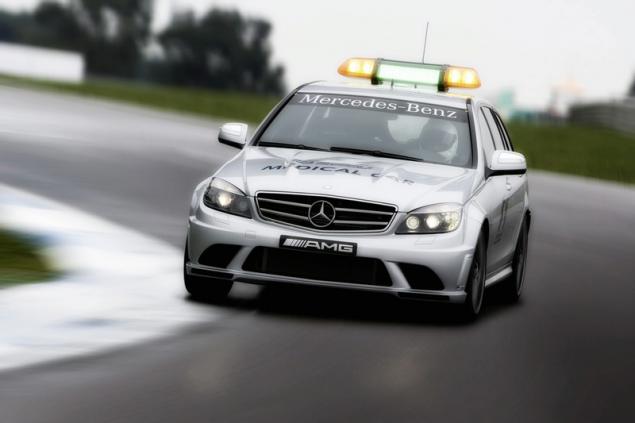
This very special wagon C 63 AMG has excellent data for such important duties, where every second counts: High-wagon is equipped with 6.3-liter V8 by AMG 336 kW / 457 hp and a torque of 600 Nm. AMG sports exhaust system has a larger diameter exhaust pipes and new rear silencers. Two double tailpipes different chrome trim. To ensure greater reliability has been optimized cooling of coolant, engine oil, transmission oil and power steering, as is evident from the new AMG front skirt with air intakes significantly larger. Engine power is transmitted through the gearbox AMG SPEEDSHIFT 7G-TRONIC PLUS. Perfect traction is guaranteed by the combination of 3-stage ESP® stability control system and differential lock.
The transition from motorsport to series production

Since 1996, eight generations of vehicle safety by AMG
All cars Safety AMG:
1996: C 36 AMG (W 202)
Sorry I could not find a normal picture just such a good CCW will be grateful!
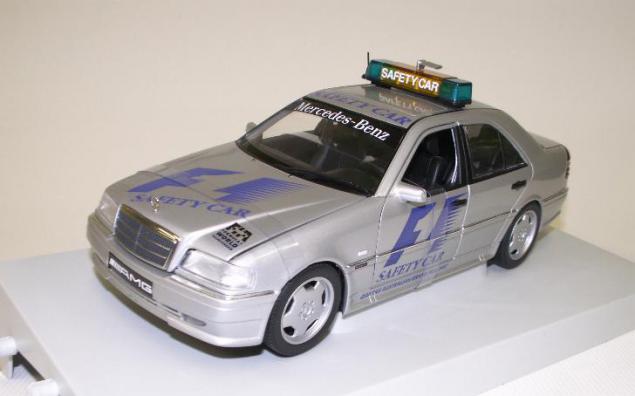
1997: CLK 55 AMG (C 208)
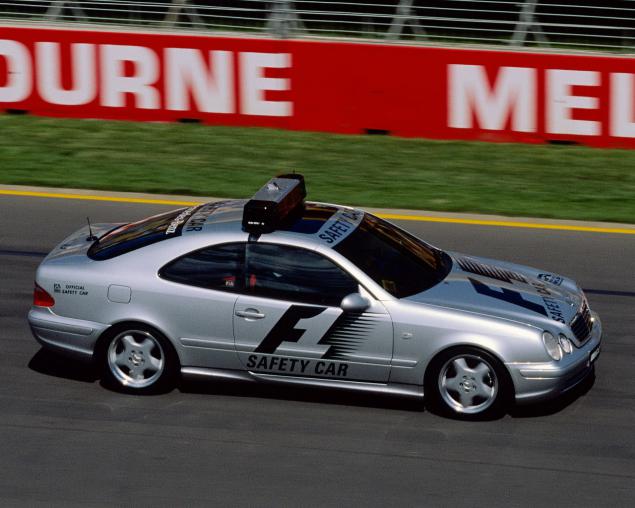
...
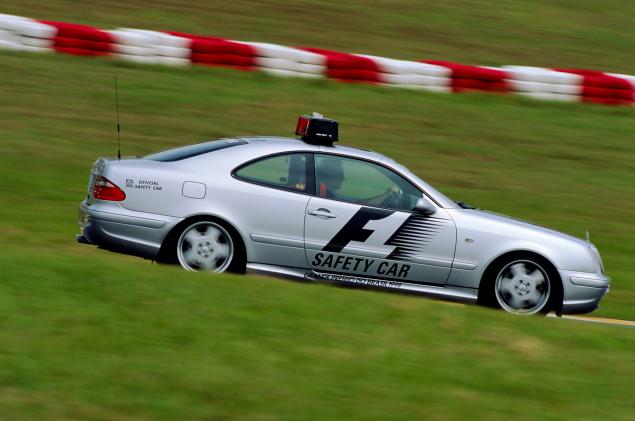
2000: CL 55 AMG (C 215)
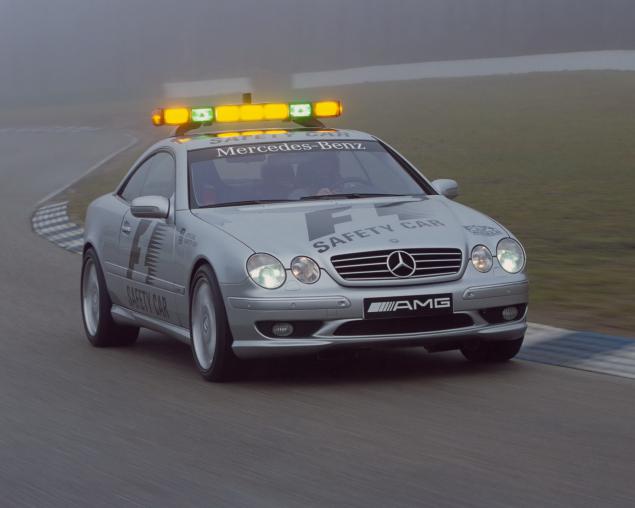
...
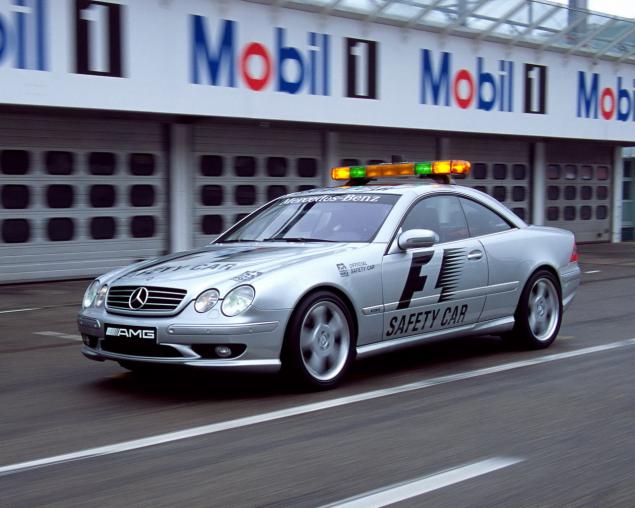
...
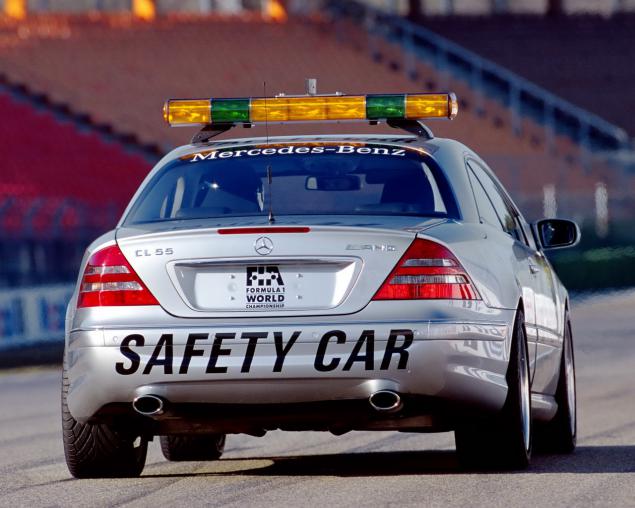
...
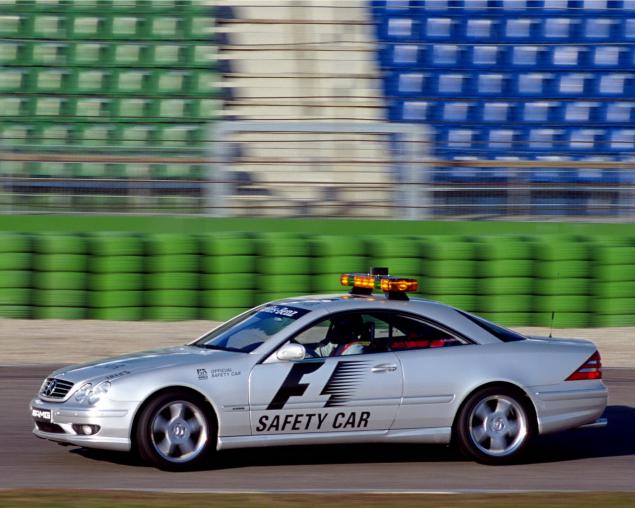
...
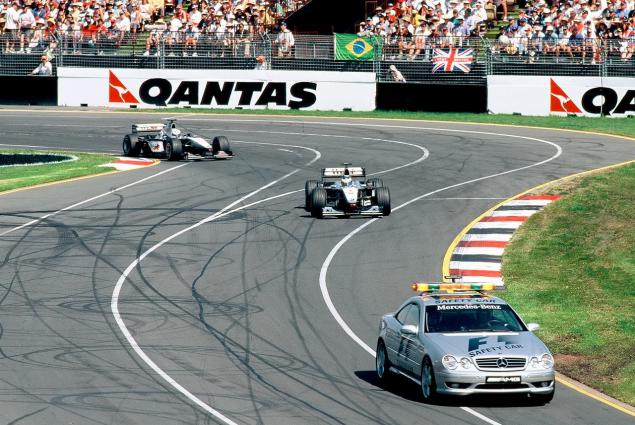
2001: SL 55 AMG (R 230)
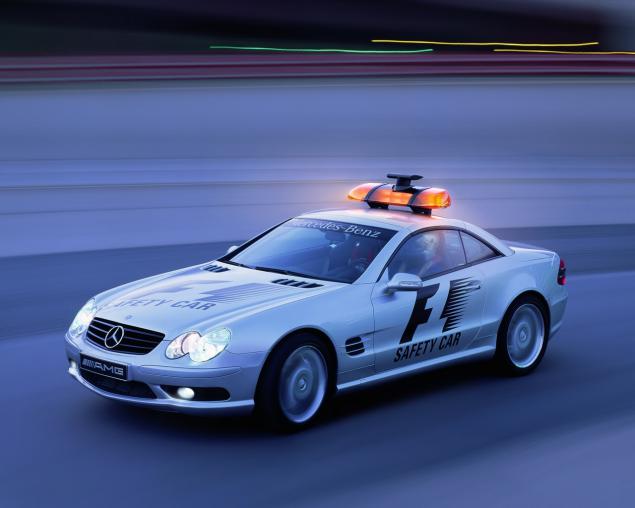
2002 was also a SL 55 AMG

2003: CLK 55 AMG (C 209)
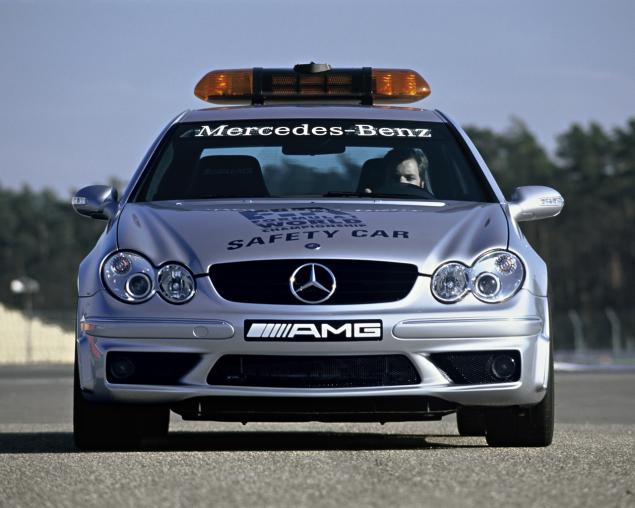
...
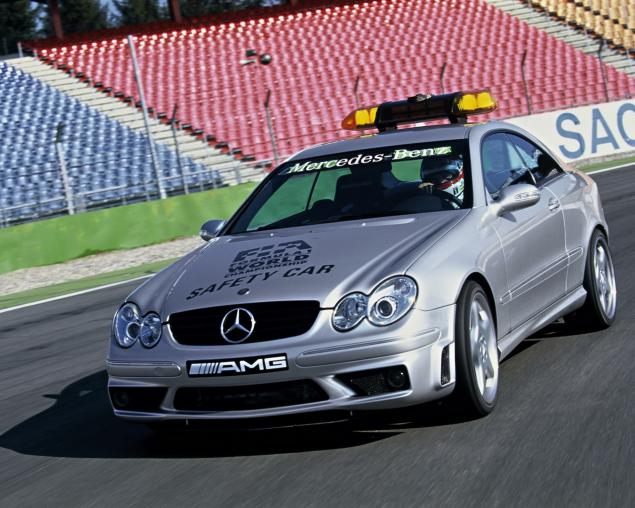
2004: SLK 55 AMG (R 171)
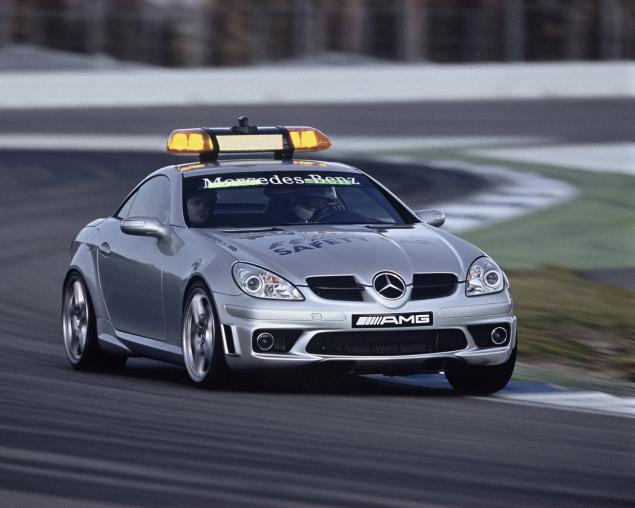
and in 2005 he was also! Save steel updated less frequently)
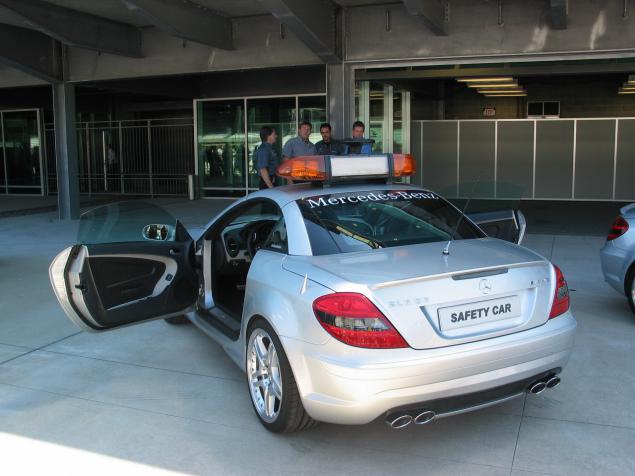
...
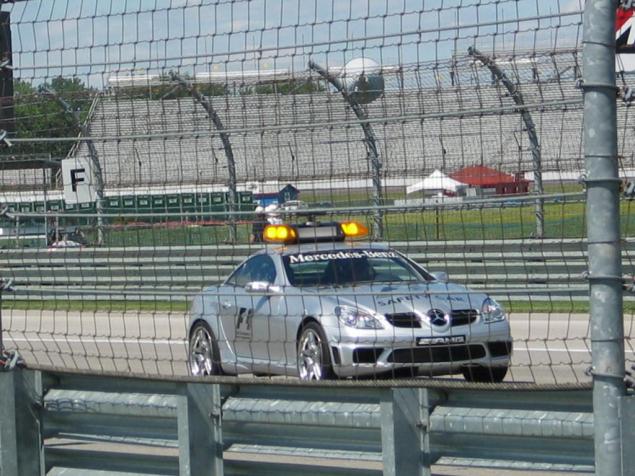
2006: CLK 63 AMG (C 209)
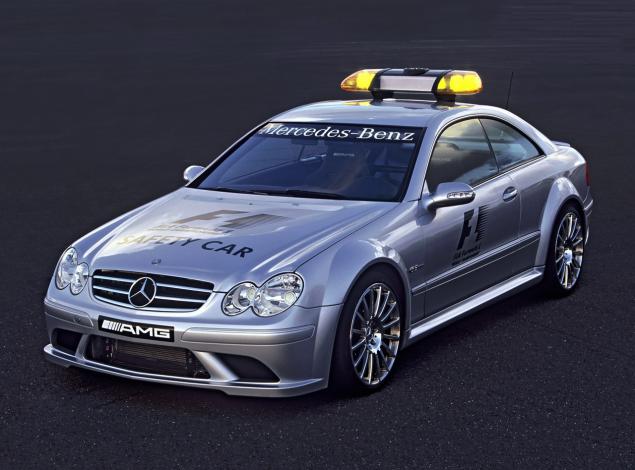
Well, he was also in 2007
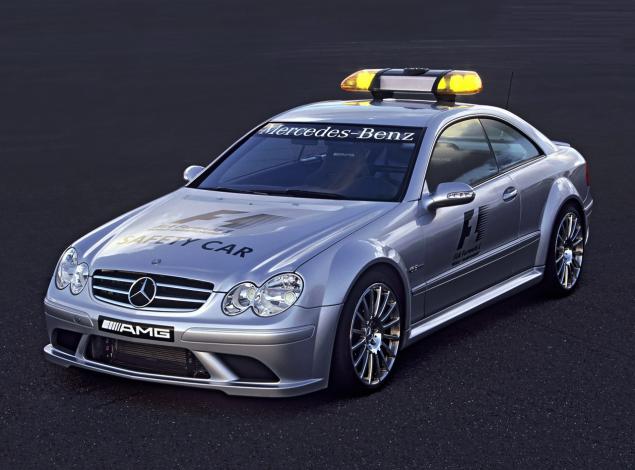
...
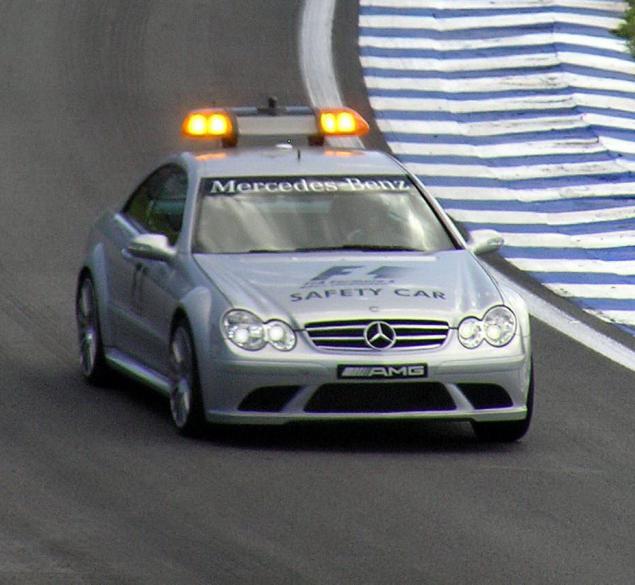
FIA safety car driving experienced racer (2000 - Bern Maylander, founder racer DTM and Porsche Super Cup). With him is an observer FIA, keep in touch by radio with the race director.

and so for spravkie
Car Safety (Safety Car) is so named due to the fact that it is a "normal" car, which is to provide security at the track during the race. During the Formula 1 Grand Prix, it appears that the race director decides that there is a dangerous situation that must be resolved with maximum accuracy. At this time, any fight between the riders is forbidden, but is allowed to refuel and change tires (2006).
Since it is a regular two-place car, albeit with a modified braking system, modified chassis, cooling system and the exhaust system, it is much slower than the race cars of Formula 1. However, in the event of an accident or bad weather conditions, the safety car has to lead the back of the field for track at a fairly high speed. The high-tech engines Formula 1 cars are cooled by ram at a high speed air flow, while reducing the speed that could cause overheating. Also, decreasing temperature decreases the speed of tires, which leads to a deterioration of their coupling properties with the track.
The first safety car was used in the 1973 Canadian Grand Prix. However, he went on the road ahead is not the leading rider, who took the position correctly one circle before, and only a few hours after the finish of the race were able to understand the present and to determine the winner. Then the safety car was used only after 20 years in 1993 in the Brazilian Grand Prix.
Canadian Grand Prix in 1999 - the only Formula 1 race, which took place finish behind the safety car.
Posted in [mergetime] 1221472904 [/ mergetime]
THE END
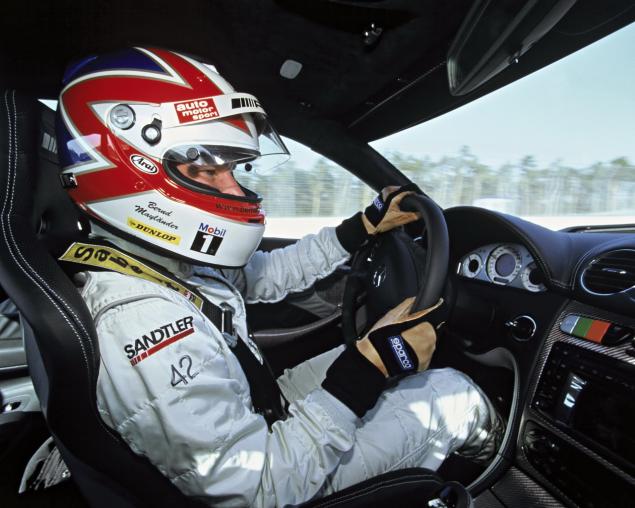
Source:
30 photos

For maximum reliability, even at very high ambient temperatures, the vehicle is equipped with a large additional coolers for engine oil, transmission oil, coolant and power steering. Unmatched chassis dynamics are guaranteed a newly developed 7-speed sports transmission AMG SPEEDSHIFT MCT with a switch on the steering column, which makes it possible to switch the transmission in just 100 milliseconds. The combination of 3-stage ESP® stability control system and differential lock on the rear axle ensures optimal traction in all weather conditions. Perfect behavior on the racetrack, the best "feeling of the road", "racing" cornering and reducing excess / understeer are guaranteed not only a specially designed chassis proved their abilities to race, but also many opportunities leveling, the distance between the wheels and the collapse wheels that enable the chassis individually set in accordance with a particular racetrack.

Front and rear axle are equipped with 19-inch ultra-light alloy wheels AMG. 8.5-inch (front) and 9.5-inch (rear) rims are fitted with tires of the dimension, respectively, 255/35 and 285/30 on the Formula 1 shinoproizvoditelya company Bridgestone. The design of the rims, with their unusual double spokes, optimizes both the cooling of the braking system and the flow of cooling air. Optimum durability and the best possible braking are the main characteristics of high-performance braking system AMG, fitted with composite brake discs with internal ventilation. The front axle is fitted with six-piston fixed calipers and brake discs with dimensions of 390x36 mm and the rear axle - 4-piston fixed calipers and brake discs with dimensions of 360x26 mm.

...

...

...

...

Along with the safety car the SL 63 AMG, another high-power car AMG celebrates its premiere in the first Grand Prix of the season in Melbourne, Australia: official medical Formula 1 car the C 63 AMG Estate Official F1 ™ Medical Car. At the beginning of every Grand Prix, fast touring AMG will follow the participants of Formula 1 on the first lap. These measures are being taken because the first round is a critical stage of the race, which involved in Formula 1 race cars most likely to encounter. In addition, in the case of any accident during the race the medical car - the first car, which appears on the scene, and it should guarantee immediate assistance.

This very special wagon C 63 AMG has excellent data for such important duties, where every second counts: High-wagon is equipped with 6.3-liter V8 by AMG 336 kW / 457 hp and a torque of 600 Nm. AMG sports exhaust system has a larger diameter exhaust pipes and new rear silencers. Two double tailpipes different chrome trim. To ensure greater reliability has been optimized cooling of coolant, engine oil, transmission oil and power steering, as is evident from the new AMG front skirt with air intakes significantly larger. Engine power is transmitted through the gearbox AMG SPEEDSHIFT 7G-TRONIC PLUS. Perfect traction is guaranteed by the combination of 3-stage ESP® stability control system and differential lock.
The transition from motorsport to series production

Since 1996, eight generations of vehicle safety by AMG
All cars Safety AMG:
1996: C 36 AMG (W 202)
Sorry I could not find a normal picture just such a good CCW will be grateful!

1997: CLK 55 AMG (C 208)

...

2000: CL 55 AMG (C 215)

...

...

...

...

2001: SL 55 AMG (R 230)

2002 was also a SL 55 AMG

2003: CLK 55 AMG (C 209)

...

2004: SLK 55 AMG (R 171)

and in 2005 he was also! Save steel updated less frequently)

...

2006: CLK 63 AMG (C 209)

Well, he was also in 2007

...

FIA safety car driving experienced racer (2000 - Bern Maylander, founder racer DTM and Porsche Super Cup). With him is an observer FIA, keep in touch by radio with the race director.

and so for spravkie
Car Safety (Safety Car) is so named due to the fact that it is a "normal" car, which is to provide security at the track during the race. During the Formula 1 Grand Prix, it appears that the race director decides that there is a dangerous situation that must be resolved with maximum accuracy. At this time, any fight between the riders is forbidden, but is allowed to refuel and change tires (2006).
Since it is a regular two-place car, albeit with a modified braking system, modified chassis, cooling system and the exhaust system, it is much slower than the race cars of Formula 1. However, in the event of an accident or bad weather conditions, the safety car has to lead the back of the field for track at a fairly high speed. The high-tech engines Formula 1 cars are cooled by ram at a high speed air flow, while reducing the speed that could cause overheating. Also, decreasing temperature decreases the speed of tires, which leads to a deterioration of their coupling properties with the track.
The first safety car was used in the 1973 Canadian Grand Prix. However, he went on the road ahead is not the leading rider, who took the position correctly one circle before, and only a few hours after the finish of the race were able to understand the present and to determine the winner. Then the safety car was used only after 20 years in 1993 in the Brazilian Grand Prix.
Canadian Grand Prix in 1999 - the only Formula 1 race, which took place finish behind the safety car.
Posted in [mergetime] 1221472904 [/ mergetime]
THE END

Source:






